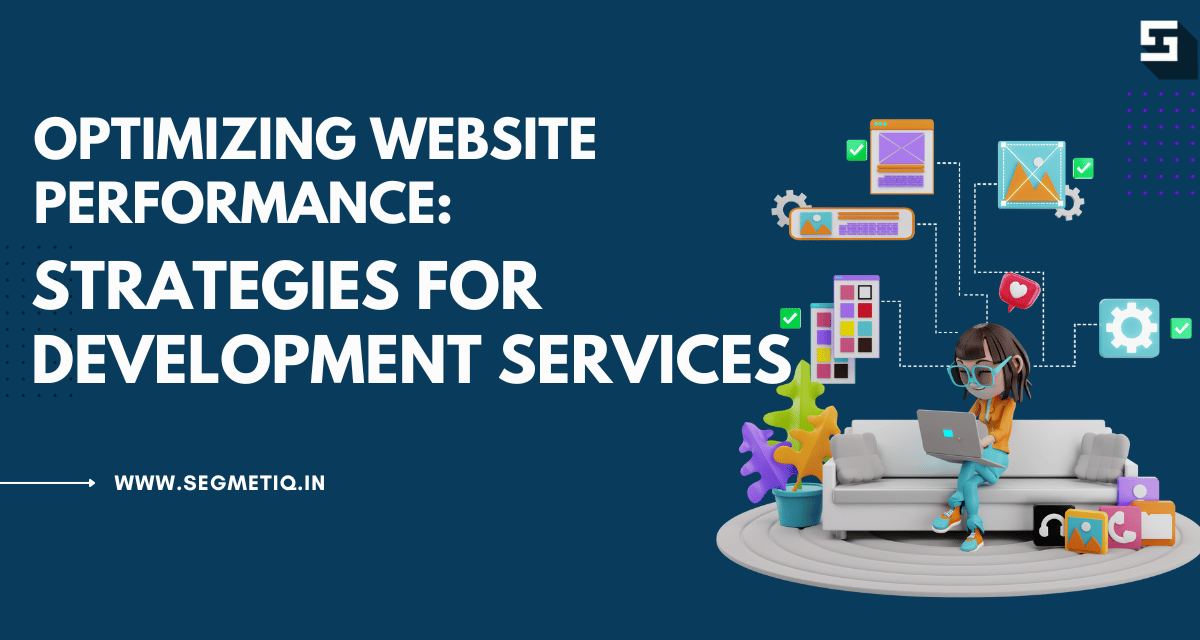In today’s digital landscape, where online presence is paramount, having a website that not only looks good but also performs optimally is crucial. With the ever-increasing competition in the online space, users have become more demanding, expecting websites to load quickly and deliver an exceptional user experience. This is where website development services come into play, offering a range of strategies to optimize website performance and ensure maximum efficiency. In this blog, we will delve into some effective strategies for optimizing website performance, focusing on aspects like website design, development, and overall user experience.
1. Prioritize Website Speed
Website speed is a critical factor that significantly impacts user experience and search engine rankings. Slow-loading websites frustrate users and lead to higher bounce rates. To optimize website speed, development services employ various techniques such as:
- Optimizing Images: Large images can significantly slow down a website. Developers use image compression techniques to reduce file sizes without compromising quality.
- Minimizing HTTP Requests: Each element on a web page, such as images, scripts, and stylesheets, requires a separate HTTP request. By reducing the number of these requests, developers can improve website speed.
- Caching: Implementing browser caching allows website data to be stored on a user’s device, reducing the need to retrieve data from the server on subsequent visits.
2. Responsive and Mobile-Friendly Design
With the increasing use of smartphones and tablets, ensuring that a website is responsive and mobile-friendly is essential. Development services focus on creating websites that adapt seamlessly to various screen sizes and devices. This not only enhances user experience but also improves search engine rankings, as Google prioritizes mobile-friendly websites in its search results.
3. Streamlined Website Navigation
Intuitive navigation is key to keeping users engaged and guiding them to their desired destination. Development services employ user-centric design principles to create clear and easy-to-navigate websites. This involves organizing content logically, implementing intuitive menu structures, and providing prominent calls-to-action (CTAs) to encourage user interaction.
4. Optimized Code and Scripting
Clean and optimized code is crucial for improving website performance. Development services ensure that the website code is lightweight, well-structured, and follows best practices. This includes minimizing unnecessary code, leveraging browser caching, and optimizing scripts for faster loading times. Additionally, developers use techniques like lazy loading to defer the loading of non-critical resources, further enhancing website speed.
5. Content Delivery Network (CDN) Integration
A Content Delivery Network (CDN) is a network of servers distributed across multiple geographic locations, allowing for the efficient delivery of website content to users worldwide. Development services integrate CDNs to reduce latency and improve website performance by serving content from the nearest server to the user’s location. This results in faster page loading times and a smoother user experience, regardless of the user’s location.
6. Regular Performance Monitoring and Optimization
Optimizing website performance is an ongoing process that requires regular monitoring and optimization. Development services employ tools and analytics to track website performance metrics such as page load times, bounce rates, and conversion rates. Based on this data, developers identify areas for improvement and implement optimizations to enhance website performance continuously.
Conclusion
In the competitive landscape of online business, optimizing website performance is paramount for success. Website development services play a crucial role in implementing strategies to enhance website speed, responsiveness, and user experience. By prioritizing factors such as website speed, responsive design, streamlined navigation, optimized code, CDN integration, and regular performance monitoring, development services ensure that websites deliver optimal performance and engage users effectively. As the digital landscape continues to evolve, investing in website optimization becomes increasingly essential for businesses looking to stay ahead of the competition and provide an exceptional online experience for their audience.


